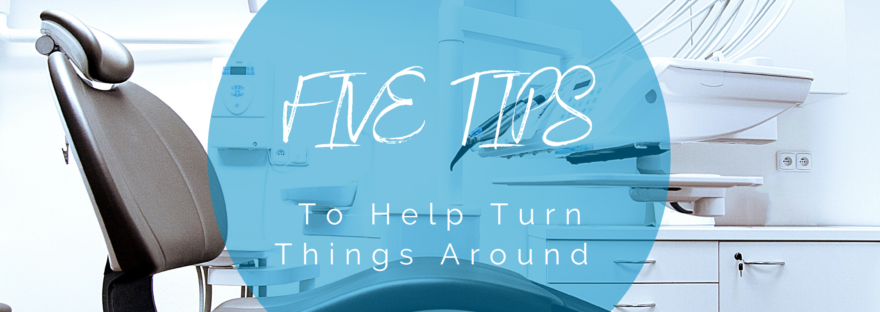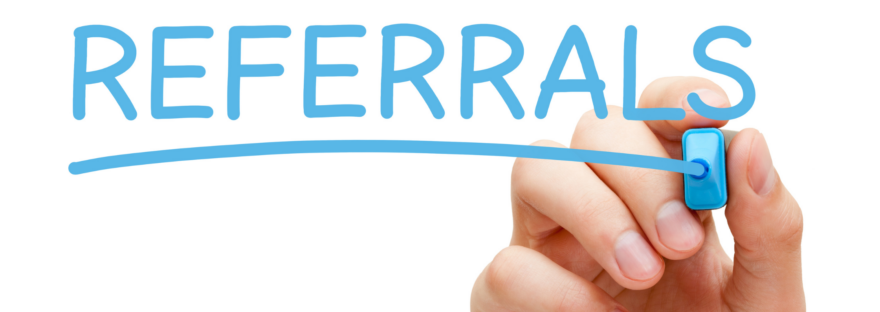Pearly & Mint Blog
Caring for Patients with Special Needs

Dental offices can be particularly scary for people with special needs, especially if it is a new environment with people they don’t recognize. As a dental care provider, it’s possible to minimize negative outcomes in these situations. Whether allowing an anxiety dog into the office during treatment or simply taking steps to prepare the space to minimize harsh lights, dental professionals can help meet the needs of patients with special needs without limiting their ability to do their job.
A Gap in Training Exists
Most dentists don’t undergo significant training to help them manage the unique circumstances of a child with Down syndrome or an adult with autism. Often, providers rely on parents to control the situation, taking their lead. While there may not be a strong level of training to prepare dental providers for this type of work, it’s a necessary skill to have.
Children with Down syndrome, for example, are more likely to have medical problems related to poor oral health. As a result, regular and ongoing care is a must for these children. And in reality, they should not be treated any differently than children.
How do You Create a Dental Practice That’s Welcoming and Supportive of People with Special Needs
The bottom line is that many people just do not know what they should and should not do to help support these needs. You can improve your dental office in several ways.
Ask parents the key questions you have
The best way to create an inclusive environment is simply to ask what you can do. Discuss the specifics of the child with parents, and open the door to learning what that child’s needs are. Because every child with Down syndrome or those on the autism spectrum has very different needs, the best support your dental office can provide is a simple question to the parents on how to make the experience the best it can be.
Make the experience positive
As your patients come in, create a positive, welcoming environment. Smile, encourage, and support their needs. Most dental professionals already do this for their patients, and it’s important to provide that same high-level of care to all patients. Put your focus on your patient, even if it means spending a bit more time later tracking details. Individualized treatment is one of the best ways to make anyone feel valued.
Encourage your patients to communicate with you
Many times, it seems easier to just get to work and get the job done but listening to what patients say can actually improve outcomes. For example, allow your patients to tell you what they need or what they are concerned about, and encourage them to let you know what they want. Even if you believe you know what your patients needs, follow their lead.
You may have some patients who have very specific requests or needs. While that may seem off-putting and may mean doing your job a bit differently than you would have, it could mean ensuring that patient’s needs are met properly. Appreciate that they are communicating with you what they need, as your ability to support them in those needs is what keeps them coming in to care for their teeth.
Ask what can reduce anxiety
Caregivers or the patients themselves can often provide a great deal of information about what they are feeling, but how will you know how to help reduce their stress or anxiety during a procedure? It’s often best to simply ask. Provide information about what is going to happen, especially when it comes to loud sounds they may not be familiar with, and reassure them you are not going to hurt them.
Speak to caregivers and your patients openly about what could help them to be more at ease. For some, that may mean having a parent hold their hand. For others, especially younger children, it may mean having the child sit on the parent’s lap. Other times, they may benefit from music playing or something on the TV to distract them.
Talk to caregivers about nonverbal patient needs
When providing care for a patient that’s nonverbal, it’s essential to understand how they communicate. Ask their caregiver to provide some information. For example, ask what normal behavior is and what is not. Find out what signs or indications they will give you that could help you better understand their specific needs at that moment. By understanding this, you’re better able to work to meet their needs.
Keep conversations light and not dental focused
Many times, dental providers offer their patients lots of information during their appointment. It’s a great way to educate and support patients in maintaining their oral health. For some people, that could lead to information overload or increase stress and fear. If your patient isn’t going to understand, hold off until after the appointment to provide valuable tips or information. That way, they are over the difficult part of the appointment. Always communicate in a way that’s best supported by the patient.
Meet their needs as best you can
Perhaps one of the most important steps you can take as a dental care provider is to have a conversation over the phone about what their needs are. Will the person be in a wheelchair that needs to fit into the dental space? Will they benefit from any type of specialized support during the appointment? If you are considering sedation dentistry services, find out if that’s acceptable with any medications the individual needs.
The effort you put into creating a good experience, the better you’re able to support your patient’s unique needs. Take some time to consider what that could mean to your patients, including encouraging them to come back to the office to continue their dental care. Fill the void that is present in many communities for people with special needs.
Understanding and Addressing Unconscious Bias
September 15, 2023
No Comments
Unconscious bias occurs readily in society, and most people wouldn’t believe they have one. It’s a type of prejudice or stereotype that individuals believe or
Caring for Patients with Special Needs
April 6, 2023
No Comments
Dental offices can be particularly scary for people with special needs, especially if it is a new environment with people they don’t recognize. As a
How to Wash Your Masks
March 31, 2021
No Comments
Proper Cleaning and Storing of Your Reusable Masks The growth of the protective face mask market went up by 400% in 2020. Because of the
Managing Emotional Health as an Essential Worker
March 13, 2021
No Comments
The pandemic has made it so that millions of people worldwide have to change how they think about “work”, whether it involves working remotely or
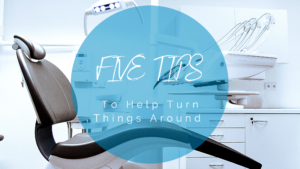
I Hate My Practice
January 25, 2021
No Comments
Many jobs can be frustrating, and it’s common to get burnout every once in a while. How can you refocus on your goals and push
Differing Opinions and How to Talk About It
November 12, 2020
6 Comments
Everyone Has an Opinion There are all sorts of issues that polarize human beings. For example, you may have different opinions regarding religion or politics
How to Wash Your Masks
Proper Cleaning and Storing of Your Reusable Masks
The growth of the protective face mask market went up by 400% in 2020. Because of the pandemic, massive quantities of coverings were made available to stores and pharmacies. Now, these products are a vital commodity.
But, the high dependence on face masks has sparked numerous questions. How do I clean the mask? Is there a right way to store it? Here, we will show you all you need to know to make the most of your coverings.
How to Clean a Reusable Mask – The Right Way
Regardless of the type of mask you purchase, appropriate cleaning, disposal, and use are vital to ensure that the covering remains as effective as possible. This is to prevent transmission, experts explain.
Reusable coverings should be washed at least daily or whenever they get dirty. You have two cleaning options:
By hand – Washing the mask by hand is a practical way of removing any of the pathogens. You would need to use tap water with soap or laundry detergent and scrub it by hand. After leathering it with soap, use clean water to rinse and remove the soap.
In a washing machine – For a more practical way, it’s a good idea to wash the mask with your regular laundry. This is a popular option that can save you time. Check the fabric label for the appropriate setting before you wash the mask.
Lastly, dry the mask in a dryer or let it air dry completely before use. Do not use the mask while it’s still soaking wet. Wet surfaces can be a breeding ground for bacteria, research shows.
How to Store a Reusable Mask?
You’ll most likely find yourself stashing the covering in your bag, pocket, or glove compartment. As long as it’s within reach, you are good to go. But that’s not the case. What you’re doing could cause a problem.
When you put the used masks in your pocket, and that mask was in contact with a pathogen, it can contaminate your hand and everything else you put in that pocket. Odds are the mask will contaminate the garment itself. The exact same thing applies to bags or gloves compartments.
Storing a Wet Used Mask
Moisture makes the covering porous. As a result, all masks are potentially vulnerable in damp weather, explained the former chief of WHO’s cancer program, Karol Sikora.
According to the CDC, the best way to store a visibly soiled and wet mask is to put it in a plastic bag. Carry a plastic bag with you and seal the mask if it gets dirty from makeup, saliva, sweat, and other components. Wet coverings are difficult to breathe through and lose their efficiency.
Storing a Dry Mask
If the mask is dry, remove it from the face, wash and dry your hands, and take a breathable bag. Options like mesh fabric or paper bags are great for temporary storage. Use these bags to store the mask and keep it clean and dry between uses. When reusing the mask, make sure you are positioning the same side of the mask facing out.
If you still want to use the pocket for storing the masks, make sure the covering is completely dry without any makeup or stain residue. Also, put the mask back on with the exact same side facing out as you did before you stored it in the pocket.
Key Takeaway
We wear face masks every day. But, without proper guidance on how to store and clean the masks, it becomes difficult to fend off the virus. Now that you know the practical ways of keeping the covering nice and clean, you can reduce the risk of transmission and the odds of contracting the disease.
References
https://www.globenewswire.com/news-release/2021/02/09/2171935/0/en/Protective-Face-Mask-Market-Statistics-2020-2026-North-America-Europe-APAC-COVID-19-Impact-Analysis-Graphical-Research.html
https://www.cdc.gov/coronavirus/2019-ncov/prevent-getting-sick/how-to-wash-cloth-face-coverings.html
https://www.independent.co.uk/life-style/face-mask-rain-coronavirus-winter-damp-wet-who-b828559.html
https://sfamjournals.onlinelibrary.wiley.com/doi/pdf/10.1046/j.1365-2672.2001.01347.x
Understanding and Addressing Unconscious Bias
September 15, 2023
No Comments
Unconscious bias occurs readily in society, and most people wouldn’t believe they have one. It’s a type of prejudice or stereotype that individuals believe or
Caring for Patients with Special Needs
April 6, 2023
No Comments
Dental offices can be particularly scary for people with special needs, especially if it is a new environment with people they don’t recognize. As a
How to Wash Your Masks
March 31, 2021
No Comments
Proper Cleaning and Storing of Your Reusable Masks The growth of the protective face mask market went up by 400% in 2020. Because of the
Managing Emotional Health as an Essential Worker
March 13, 2021
No Comments
The pandemic has made it so that millions of people worldwide have to change how they think about “work”, whether it involves working remotely or

I Hate My Practice
January 25, 2021
No Comments
Many jobs can be frustrating, and it’s common to get burnout every once in a while. How can you refocus on your goals and push
Differing Opinions and How to Talk About It
November 12, 2020
6 Comments
Everyone Has an Opinion There are all sorts of issues that polarize human beings. For example, you may have different opinions regarding religion or politics
Managing Emotional Health as an Essential Worker

The pandemic has made it so that millions of people worldwide have to change how they think about “work”, whether it involves working remotely or from home. Some essential employees work in various industries that still have to continue working with the public. They include firefighters, emergency medical workers, bus drivers, and grocery store workers.
Essential employees do a lot of important work, and the last thing that anyone wants is for these essential employees to have their mental health affected to the point where they are not able to work anymore. Here is some actionable advice that can help essential employees manage their emotional health during this time.
Find A Support Network
One of the most critical aspects of your emotional health is knowing that there are people in your life that appreciate you and who will always “have your back.” Even though many people are sheltering in place, essential employees should find a support network that makes the most sense for their personality and lifestyle.
You don’t have to manage your emotional health alone. Essential employees should go out of their way to find a support network of some kind, whether it involves a virtual game or movie night, a Bible study night, or just a night where you virtually hang out with some family or old friends.
Practice Self-Care
Self-care can take on many forms, but essential employees have to think about how to remain as emotionally healthy as possible. One key tip for essential employees is always making sure that to get as much sleep as possible.
Some people may turn to meditation to manage their emotional health, while other essential employees may practice self-care by journaling, going to therapy, or calling their friends. Self-care can look like a lot of different things to essential employees. Self-care might be a healthy diet to some, a hot bath to others, or even a daily walk to clear your head.
If you feel like your emotional health is not improving no matter what you do, it might be time to speak to a professional of some kind. Essential employees should be able to understand when it is the right “time” to speak to a mental health professional. If you have any concerns at all about your emotional health, there are often free or low-cost counselling options available through virtual channels regardless of where you live.
Acknowledge Your Situation
Many people tend to suppress the things they have to deal with, and it can end up doing more harm than good in the long run. You might have had some emotional health concerns before the pandemic, only to find that the last year has only made the situation worse. There’s nothing wrong with being honest about your emotional health. In fact, seeking support is the best and most powerful thing to do for yourself instead of trying to convince yourself that everything is fine.
There’s a lot to stress about these days. You might be worried about whether your workplace is safe, whether your company is going to lay off more employees, or whether you will be able to pay rent this month. Essential workers are the backbone of our world right now. You deserve the care and support you need, so be sure to be upfront with yourself and your employer about what you need to stay physically and emotionally healthy.
Millions of people are working day and night in risky conditions and should be allowed to vent their frustrations. If you want to remain emotionally healthy, it’s best to acknowledge what is happening rather than downplay it or dismiss it.
Understanding and Addressing Unconscious Bias
September 15, 2023
No Comments
Unconscious bias occurs readily in society, and most people wouldn’t believe they have one. It’s a type of prejudice or stereotype that individuals believe or
Caring for Patients with Special Needs
April 6, 2023
No Comments
Dental offices can be particularly scary for people with special needs, especially if it is a new environment with people they don’t recognize. As a
How to Wash Your Masks
March 31, 2021
No Comments
Proper Cleaning and Storing of Your Reusable Masks The growth of the protective face mask market went up by 400% in 2020. Because of the
Managing Emotional Health as an Essential Worker
March 13, 2021
No Comments
The pandemic has made it so that millions of people worldwide have to change how they think about “work”, whether it involves working remotely or

I Hate My Practice
January 25, 2021
No Comments
Many jobs can be frustrating, and it’s common to get burnout every once in a while. How can you refocus on your goals and push
Differing Opinions and How to Talk About It
November 12, 2020
6 Comments
Everyone Has an Opinion There are all sorts of issues that polarize human beings. For example, you may have different opinions regarding religion or politics
I Hate My Practice
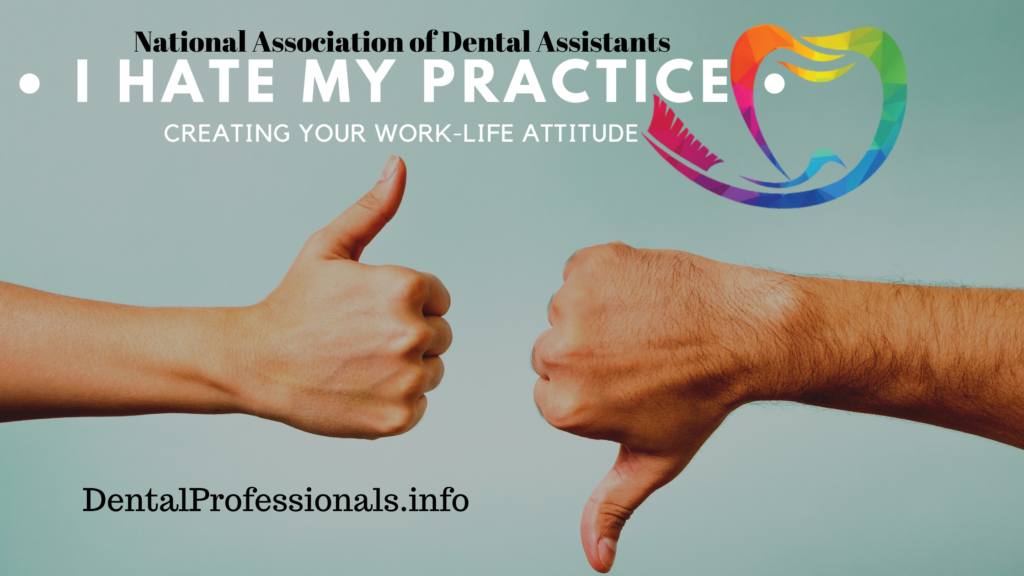
Many jobs can be frustrating, and it’s common to get burnout every once in a while. How can you refocus on your goals and push forward? You might hate your practice right now, but consider a step back before making other big decisions. Is this something that the people around you are feeling, as well? These are some questions to consider as you move through your feelings.
In this case, you might own a dental practice and might be frustrated with how it is operating. Perhaps some business moves have not panned out the way you hoped. You also may be an employee at a dental practice and feel like they don’t have the right plans or vision for the practice. Here are some tips that could potentially change your perspective.
Emphasize the Positive
Many things might be frustrating about your job, but it’s also essential to remember the good parts of a dental practice. There’s a good chance that you have helped many children, families, adults, and seniors with their dental care and overall health.
It might be hard to balance work life and home life, but always remember that your work does help patients and keeps them healthy. A positive attitude about your impact might be the change you need to enjoy your job again!
New Traditions
Let’s say that a dental practice is getting more tense thanks to personal feuds or a pattern of miscommunication. It might be time to consider a new tradition such as a virtual happy hour to help employees blow off steam and get to know each other outside of the practice.
Small traditions can help a lot when it comes to communication, bonding, and overall employee morale. It doesn’t matter if it’s a soccer game or a monthly meal – start a new tradition that gets others excited!
Keep it Professional
You might hate your dental practice because of a particular person you work with, but this is not a reason to jeopardize your career. Many people let their temper get the best of them and end up facing consequences when they could’ve managed their emotions better.
It might be tempting to complain about your job on social media or start yelling at co-workers. Please resist the urge to do so; your future self will thank you for it.
Use Humor
You can work hard and still have fun at a dental practice. One of the easiest things to do is to consider injecting a bit of humor throughout the day, whether it involves telling some jokes, sharing a funny news story, or just dressing up with a funny accessory every once in a while.
You can’t hate a dental practice where you are having fun, and humor helps drive that point home.

Understanding and Addressing Unconscious Bias
September 15, 2023
No Comments
Unconscious bias occurs readily in society, and most people wouldn’t believe they have one. It’s a type of prejudice or stereotype that individuals believe or
Caring for Patients with Special Needs
April 6, 2023
No Comments
Dental offices can be particularly scary for people with special needs, especially if it is a new environment with people they don’t recognize. As a
How to Wash Your Masks
March 31, 2021
No Comments
Proper Cleaning and Storing of Your Reusable Masks The growth of the protective face mask market went up by 400% in 2020. Because of the
Managing Emotional Health as an Essential Worker
March 13, 2021
No Comments
The pandemic has made it so that millions of people worldwide have to change how they think about “work”, whether it involves working remotely or

I Hate My Practice
January 25, 2021
No Comments
Many jobs can be frustrating, and it’s common to get burnout every once in a while. How can you refocus on your goals and push
Differing Opinions and How to Talk About It
November 12, 2020
6 Comments
Everyone Has an Opinion There are all sorts of issues that polarize human beings. For example, you may have different opinions regarding religion or politics
Differing Opinions and How to Talk About It

Everyone Has an Opinion
There are all sorts of issues that polarize human beings. For example, you may have different opinions regarding religion or politics than your neighbors. Still, there is an expectation that these differing opinions don’t necessarily lead to any hostility or confrontation. Technology has also changed how we talk to each other since social media allows us to have conversations with people that we never actually met in real life.
Hundreds of millions of people use social media every day, and they all might have very different opinions and perspectives. Some people might not truly understand how to discuss and talk through these different opinions in a civil manner. Abortion, for example, is a polarizing topic that could lead to a hostile discussion. Here are some tips on how to disagree with other people while remaining calm and rational.
Think About Timing
There are some situations where it just isn’t time to discuss a controversial topic. For example, let’s say that you disagree with your friend about politics. You may have wanted to plan a conversation with them regarding different opinions on a specific topic and plan to bring it up.
Of course, if it is that person’s birthday and they are celebrating at a bar with other friends, this would be a terrible time to bring up politics at all. People should make sure that they talk through differing opinions in a more comfortable atmosphere of some kind. If you are alone at your house and invite your friend over, it might make more sense to speak more freely about different opinions in that setting.
Look for Agreements
It is very unlikely that you will run into someone that simply disagrees with everything that you think. One of the best ways to talk about differing opinions is to find common ground and start the conversation from there. This could potentially change the entire tone of the interaction, as your conversation partner might be able to see things from your perspective easier.
Think about points that you might be willing to concede or reconsider and speak about how they might be right about certain parts of an issue. No one wants to feel like they are being tricked or persuaded into a debate, because that can be quite uncomfortable. However, they might be more willing to talk if they understand that you don’t disagree with them on everything. For example, phrases like, “Can we agree that people deserve safety?” or “Can we agree that someone’s healthcare is their private business?” are helpful in finding common ground.
Listen More
Let’s say that you want to speak with an old friend about a topic that you know that you feel strongly about. You might bring up the topic and make it clear that you want to speak about it. At this point, they might agree that it is an excellent time to speak about the topic. What if you just rambled on for the next five minutes about how that friend is wrong for their opinion? That wouldn’t be conducive to a conversation.
If you put yourself in their shoes, it’s easy to see how you might feel as though you are being attacked. One of the best ways to speak through differing opinions is to listen more. Individuals should clarify that they actively want to know what your conversation partner is thinking and that their perspective is valued. To continue listening, try paraphrasing back their ideas or asking something like, “By saying [X], are you meaning [Y]?” and you can learn more about where they’re coming from.
Don’t Say “But”
You might be very passionate about your opinion, and there’s nothing wrong with that. However, you shouldn’t be interrupting the other person in the conversation because you are burning to counter their point. If you find that you keep telling that person, “But–”, it might be a sign that you are listening only to talk, rather than actively listening to your conversation partner.
If you are not even giving the other person room to speak, they might feel as though it is useless to elaborate on their position. You will probably find that if you let the other person in the conversation speak, they might feel like it’s easier to talk to you.
Are You Part of the Amazing Dental Assistant Community?
We offer member only rates and discounts through our pre-qualified service providers. Travel
Shopping, Insurance, Education and so much more.
Effective Dental Practice Huddles

Effective Dental Practice Huddles
Many business owners and entrepreneurs acknowledge that they may be holding more meetings than they should. Believe it or not, some of the most well-known entrepreneurs actively avoid meetings. Many organizations believe that “huddles” are more necessary, requiring less time than usual meetings. For those who are unaware, huddles are short meetings where employees where team members update each other on their schedules, priorities, and any potential issues.
It can be quite challenging to run a dental practice, and there are many different factors to consider. You might be running a dental practice in a city where there is a tremendous amount of competition, or you may be having issues when it comes to patient attrition. You may find that dental practice huddles can help when it comes to communication, transparency, and efficiency. Here are some aspects of your dental practice huddles that can help you understand their importance.
Huddle Rules
Huddles aren’t a place to discuss office drama or issues of any kind. They should also be capped at 10 or 15 minutes, and shouldn’t be a time where staff members bring up concerns. Encourage staff to reach out individually for those conversations.
Try to give at least every person involved in the huddle one minute each to speak, and make sure that staff members are actively discussing where they are stuck. Huddles are a great way to understand the pulse of an organization.
Some rules should be understood when it comes to your dental practice huddle. First of all, the huddle should never be run by the practice owner. They should be present, but it should be run by the office manager and other staff members throughout the week. If the practice owner isn’t present, note that it could set a bad example and affect employee morale.
Secondly, you should conduct your huddles first thing in the morning. This helps to get everyone situated for the day and understand what needs to be done. The huddle should also include any relevant information required, including schedules, charts, and other relevant data. An assistant or hygienist should also bring relevant patient information, pending treatment, and other pertinent medical data.

Examine Progress
Huddles should happen daily, but there should also be monthly huddles to make sure that the dental practice remains on track. Daily huddles are vital because you can add and subtract daily goals. The daily huddle should focus on immediate priorities, while the monthly huddles should concentrate on long-term metrics and an overall vision for the dental practice.
You can also examine the statistics of the day before in the morning huddle. However, it’s also important to remember that the daily huddle shouldn’t mention the day’s issues or goals before setting them and that broader conversations can be reserved for a weekly or monthly huddle. There’s also nothing wrong with being ambitious (but realistic) regarding monthly goals. Specifically, your dental practice should aim for 5% to 10% over averages.
Why Huddles Work
One of the great things about huddles is that they make it more apparent that communication is always open, rather than employees being worried about a long-winded meeting where nothing truly gets accomplished. It’s also a great and short way to discuss new opportunities, specific concerns in business strategy, or potential long-term obstacles. The right huddles can help employees remain inspired and motivated about both short-term and long-term goals.
The issues that continue to emerge from daily huddles can then be discussed in weekly huddles. Of course, the issues that come up in weekly huddles might then come up in monthly huddles. Overall, dental practice huddles are an incredible way to encourage communication and improve strategy. Your employees can also explain specific ways in which they are stuck, and the practice can work together to make sure that those bottlenecks are eliminated.
A well-run huddle is about strategy and transparency, but it should also be noted that it’s about providing superior customer service. A successful dental practice will have to make sure that customers leave completely satisfied, and every dental practice huddle should keep customer service as a focus and priority. Ultimately, huddles are a great way to establish a communication rhythm within your dental practice that keeps things running more smoothly at all times.
Word of Mouth and Your Practice

Your Dental Practice
Are you interested in growing your dental practice without investing thousands of dollars in more advertising? The answer is as close as your specialty — it’s all about your clients’ mouths!
What your clients say about your practice has a significant impact on how fast you grow. Client referrals can bring in new, high-quality patients that fit your ideal customer profile.
How can you increase customer referrals to grow your business? Or if you have a referral program, how can you make it better? Here are the tips you need.
Create a Referral Program
A referral program is the easiest way to get your current patients to refer others to you. Don’t think your practice is too small to benefit from a referral program — word of mouth marketing can amplify your brand thousands of times over.
81% of consumers are influenced by social media posts from their friends and family. Every patient you have can impact hundreds of people and move them one step closer to choosing your dental clinic.
All you have to do is encourage your current customers to tell others about you. How do you set up a referral program? Here are some ideas.

Make Sure You Keep Things Ethical
There are limits to what you can do to encourage referrals. Make sure you stay within the legal and ethical boundaries of the dental industry.
For instance, you can’t treat some patients better than others. You can’t offer a referral — or a referring patient — faster treatment, preferential service, or other care-related benefits. However, you can offer a reward as a thank you for a referral.
You’ll also want to make sure that someone is assigned to administering the referral program so that everyone gets the benefits they are due.
Starting a Dental Referral Program
The first step when creating a referral program is to decide on the rewards. The simplest thing to do is to offer new patients a discount on their first visit. You can create referral cards to make it easy for your customers to refer people they know.
However, don’t just stick with printed materials. Create an email list for your customers and, along with promotions and reminders, share useful information that they can forward to friends and family. Also, give them information and posts that they can share on social media.
Once you’ve decided on the referral discount, it’s time to think about your customers’ benefits. You can offer gift cards, deals on specific services, or even monthly drawings for a larger prize.
You might also consider having events for your referring patients. An appreciation event can help your customers feel even better about sending new patients your way.
Invite the Best Patients First
If you want to start small, especially if the cost is a concern, you can begin by just inviting your best patients. The ones who always have a kind word to say about your services and often thank you for your work.
Those customers are the most likely to be brand advocates, so they are a great place to start. Give them some materials that they can use to promote your office and ask them to begin referring their friends and family to your practice.
You can gauge your program’s results and get feedback from these customers before you roll it out to everyone you serve. Your best patients can help you refine the plan so it’s as effective as possible.
Make Your Program Part of the Patient Process

What’s the best way to benefit from a referral program? Make sure you implement it consistently!
If you forget to ask for referrals, you aren’t likely to get one. However, most people looking for a new dentist will ask their friends and family for ideas. Tap into that opportunity by making your referral program a built-in part of your patient relationship
Just like you have a specific process for a first patient, create a post-visit process
where you encourage patients to refer others and let them know the benefits they can get.
Make sure customers are on your email list and keep your list active with regular messages.
When you consistently ask every patient for referrals every time, you’ll dramatically increase the growth of your practice.
Just like you have a specific process for a first patient, create a post-visit process where you encourage patients to refer others and let them know the benefits they can get.
Take Advantage of Referral Marketing
91% of Americans are willing to share an exclusive offer with friends and family, and patients that are referred by others are more loyal than other customers. There’s no reason not to use a referral program to grow your dental practice.
When you make a referral program a consistent part of your relationship with your customers, you’ll benefit from their network. Word of mouth marketing is powerful and much more cost-effective than other types of outreach.
There’s no reason not to start — or improve — your referral program today!
We would appreciate it greatly if you shared this article with your office and co-workers.
Let us know what kind of referral program, if any, that your practice uses below in the comments.
Focusing on the Patient Experience
As you have undoubtedly heard, going to the dentist is most people’s most hated experience. Close to 60% of people have anxiety about the experience, and for some, it’s a true phobia. It’s tough to let someone go into your mouth — which you rely on for eating and breathing — and poke around.

Are We That Scary?
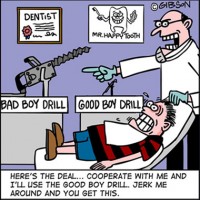
Many times dental appointments are painful. And there’s always the risk of getting news that you need a significant procedure. Those procedures cost a lot of money and are often more painful than a routine cleaning.
As a result, people avoid the dentist, which doesn’t do their oral health any favors. What can you do to soothe people’s fears and give them a better experience at your clinic?
Here are some tips that will help.
Make Scheduling Simple
The first thing you can do is make sure that scheduling a dentist appointment is simple. If you haven’t updated your website to allow online scheduling, that’s a great start. The harder it is to schedule appointments, the more excuses people will make.
Your office staff probably already ask patients if they’d like to schedule their next appointment as they check out. This is another excellent way to overcome fear and get cleanings and care on the calendar.
Finally, make sure you follow up with reminders. Dental appointments happen infrequently — perhaps as rarely as twice a year — and it’s very easy to get busy and overlook the visit. Many people check their cell phone text messages even more often than email, so consider a text messaging reminder system.
Educate Patients About New Technology
Many people who avoid the dentist have memories from decades ago that involve a bad experience. Or, they may have heard horror stories from others. When you talk to patients about the latest technology and how it keeps them comfortable and pain-free, it can help them relax and enjoy their visit.
Make sure your marketing talks about the comfort of the modern dental office, about how patients can wear headphones, or even take advantage of sedation dentistry (if you offer it.) These reassurances not only help encourage appointments, they’ll make the actual patient experience much more pleasant.
Your messaging can also include the fact that regular dental appointments may help you avoid getting cavities or needing significant dental work. The more often someone attends to their dental health, the less likely it is that there will be substantial damage to repair.
Make Your Waiting Room Relaxing and Inviting
Everyone who visits your dental clinic will spend at least a few minutes in the waiting room. This space is one of the highest-impact areas for patient comfort and putting people at ease.
Are you a family dentist? Include a play area where kids can relax and enjoy simple toys. Do you serve mostly adults? Create comfortable seating in a serene environment. Chairs should not be hard or uncomfortable, and you want to avoid a sterile, “doctor’s office” feeling.
Many dental offices include magazines, and patients still read them. However, it may be even more useful to offer free WiFi. You can post the WiFi password prominently in the waiting area so patients can listen to music, go online, and more without using cellular data.
Consider Fun Rewards for Adults at the Dentist
You might think that the only patients who are interested in fun and encouraging stickers are children, but you’d be wrong. Although adults rarely admit it, many are delighted with the same simple, playful, and cheerful messages that kids are.
Stickers are so popular as an add-on to retail purchases that there’s a thriving resale market for them on eBay and other online sales sites. Customers even share their disappointment online if they don’t get their sticker sheet.
Why not jump on a trend? Give your adult patients the option of getting a fun and uplifting sticker after their appointment. You can even use a tongue-in-cheek reference to the act of going to the dentist by giving away #Adulting stickers.
You’ll be surprised how many delighted patients will accept a sticker and even share it on their social media accounts. It gives you great advertising, and you may find patients asking about a sticker when they schedule!
You Can Make Going to the Dentist a Fun Experience
There’s only so much you can do about the actual process of cleaning and repairing a person’s teeth, but there’s so much about the patient experience that you can impact otherwise.
Make it easy to schedule appointments and send text message reminders. Help patients understand that today’s technology means less pain and discomfort in the dentist’s chair. Encourage folks to relax in a high-quality waiting room with amenities that your clients enjoy.
And, don’t forget to have fun. Even adults enjoy whimsical and inexpensive rewards for their responsible behavior, from stickers to little toys to a piece of dark chocolate. When you reward your patients, they’ll be more likely to return.
With these tips, your dental clinic will be a place your patients feel comfortable, leading to more regular appointments, referrals, and an overall improvement in your business.
Stand Out in your Office!
Join the one Association that has been working for the Dental Professionals since 1974!
Fairies All Over the World are Now Looking for Part-Time Work
S&P 500 Shows a 10% Decrease in the Value of a Lost Tooth
February 21, 2019, according to the just-released Original Tooth Fairy Poll®, sponsored by Delta Dental, the Tooth Fairy’s average cash gift declined to $3.70 for a lost tooth. A whopping ten percent decline from last year. Apparently, over the same period, the S&P 500 also saw a decline and decreased by 3 percent.
We haven’t made it to the climatic event off strikes, picket lines and Government bail-out demands yet, but I wouldn’t be surprised to see your local tooth fairy in the Unemployment line or looking for part-time work.
At the very least, a smart child would hold on to those lost and homeless teeth of theirs till the economy trends upwards.
It appears through the data collected that the very “first tooth” still impresses the tooth fairy and brings in more doe! The monumental first tooth rakes in a whole $1.26 more than the average take-home of $3.70. So while the going rate of the first tooth at $4.96, your every run of the day chomper is only sitting at $3.70 as opposed to last years prices of $4.13.
Of course, with everything else location, location, location makes a difference! Seems the West is bringing in more while the midwest just seems to disgrace the tooth by throwing chump change at it.

With just a little digging on the interwebs you can clearly tell that the fairies are feeling the hit!


Even the children are noticing the hit at the pillow! @thetoothfairyie on IG dropped this sad note. #deprivedchildren

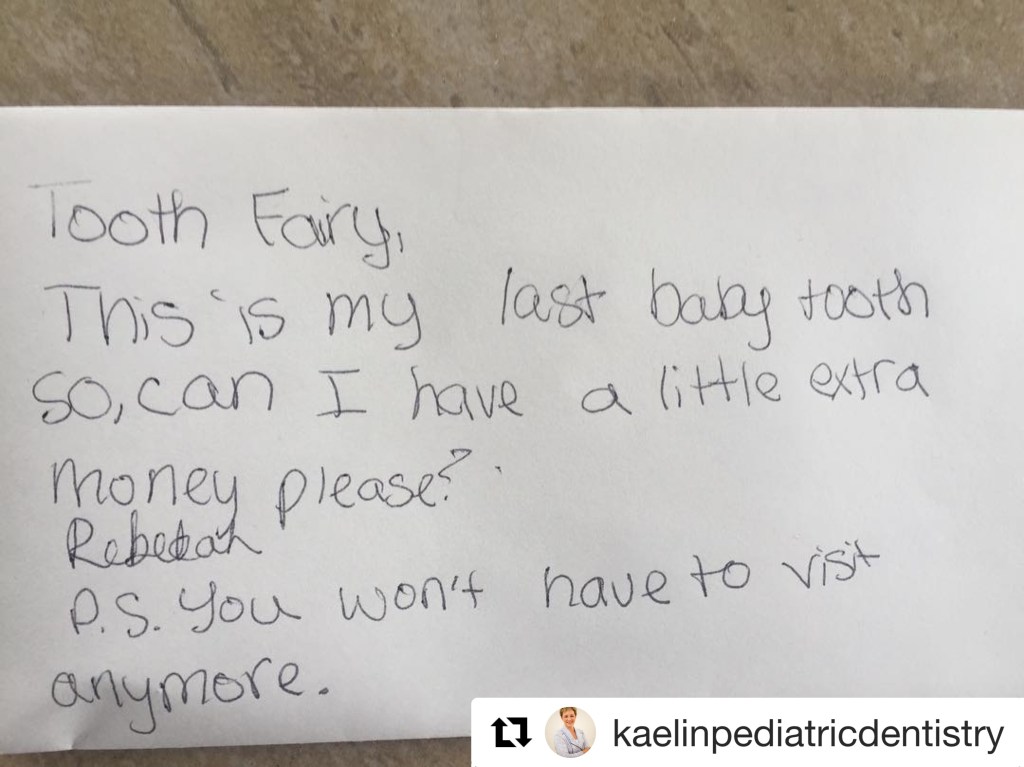
“P.S You won’t have to visit anymore.”
The children have been left to outweigh the pros and cons for the fairy themselves!
Now we got an anonymous DM from a fairy stating that the demands of the job have actually increased which is why the amounts the children have seen have been less. She said that they have had to maneuver through messy rooms, and have suffered injuries from dodging loose pets on top of having to actually search for the tooth itself.


